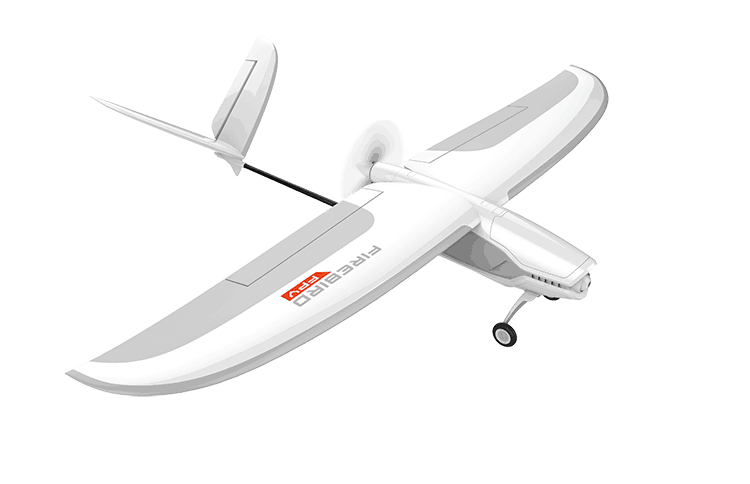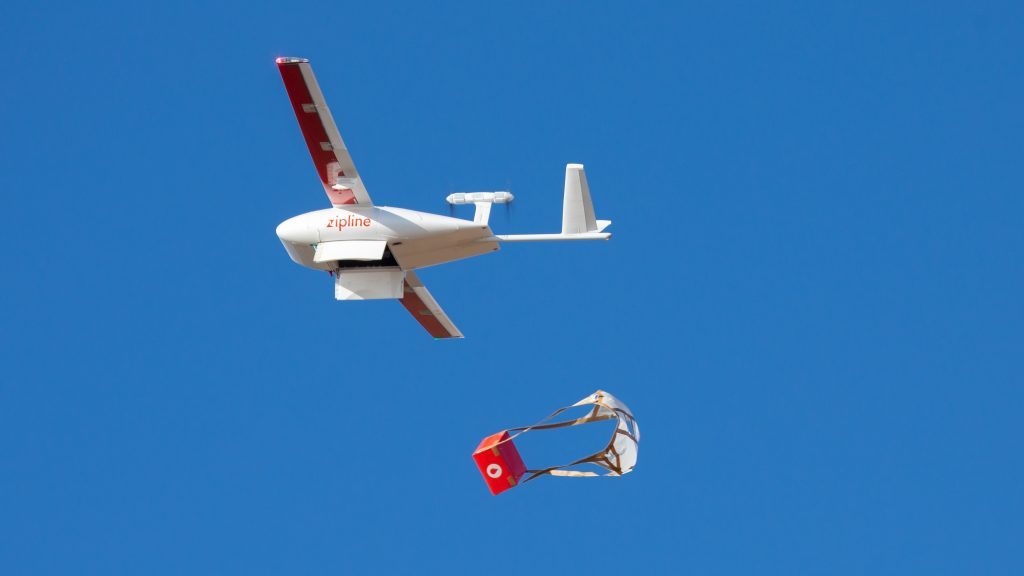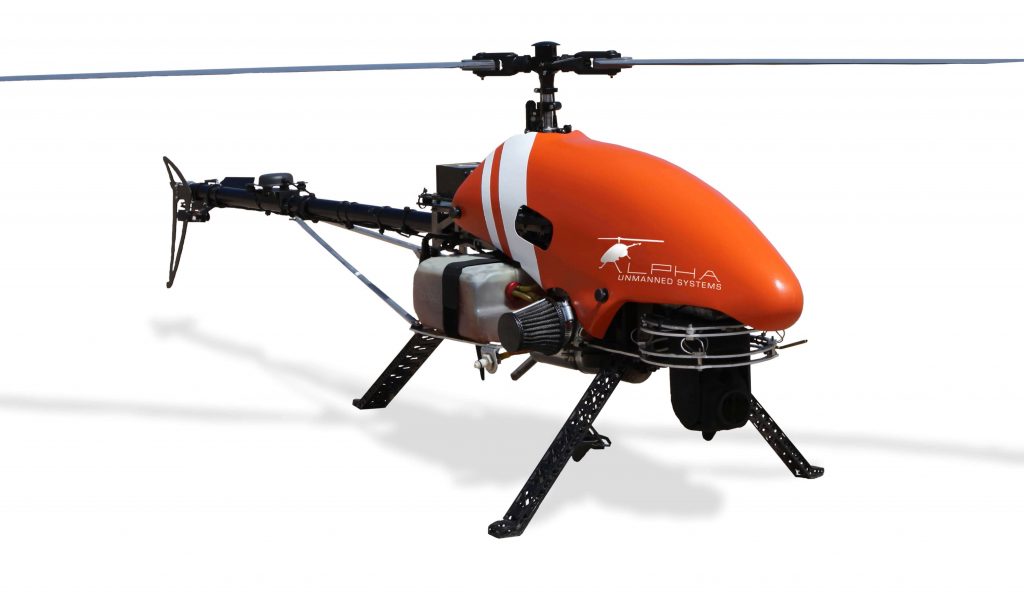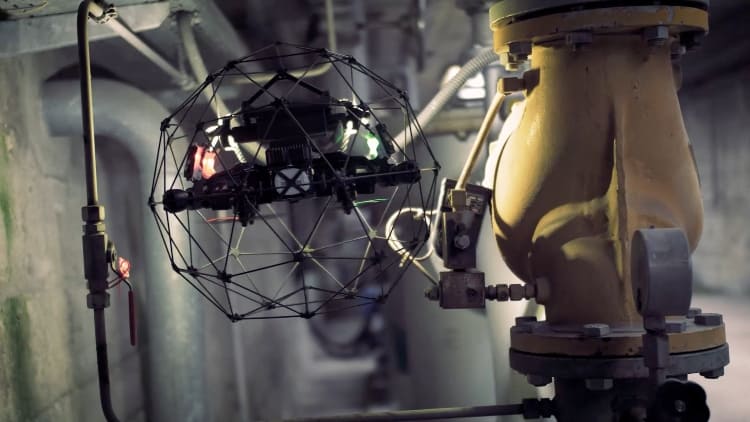What Types of Drones Are There? A Guide to All the Different Drone Types on the Market
BY Zacc Dukowitz
1 November 2019What types of drones are there?
The short answer is that it depends on how you look at it.
One way to categorize the types of drones on the market is to divide them into those used primarily by commercial drone pilots, who fly for work, and those used primarily by recreational drone pilots, who fly for fun.
A second way to look at drone types is to divide them up based on their design.
In general, drones fall into two distinct groups when looked at this way. In one group, you have multirotor drones, which are drones that fly using two or more rotors. In the other group, you have fixed-wing drones, which are drones that—you guessed it—have two fixed wings.
And finally, a third way to look at the types of drones is to look at drones made for specific types of work scenarios—like the Elios 2, a drone made just for indoor inspections.
Now that we’ve covered the three ways we’ll be organizing the different types of drones, let’s dive in and take a closer look at each one.
Want to jump around? Here you go:
- Types of Drones: Recreational vs. Commercial
- Types of Drones: Multirotor vs. Fixed-Wing
- Types of Drones: Drones Made for Specific Applications
Types of Drones: Recreational vs. Commercial
Remember, recreational drone pilots fly just for fun while commercial drone pilots fly to earn money. But there’s still a lot of variation within each of these two groups, as well as some overlap between them.
Let’s take a look.
Recreational Drones
The first thing to note is that even though the drones in this category are used for fun that word can mean different things to different people. It would be incorrect to say that the only types of drones used by recreational pilots are toy drones.
That being said, some of the drones flown by recreational drone pilots do fall squarely into the toy category. These types of drones are also called mini or micro drones and they’re usually pretty inexpensive, running anywhere from around $30-$150.
[Want to find the top cheap drones on the market? Check out our free guide.]
Toy drones are small, durable, and often best flown indoors since they’re small enough that any amount of wind can toss them around pretty easily.
But if you’ve been flying for a while, you might decide that you want to invest in a drone that costs a little more. Maybe you enjoy the greater control you get at a higher price point, or maybe you want a selfie drone to take action shots while on vacation.
You might also choose to get a nicer camera drone because you’re an amateur photographer or videographer who wants to capture good aerial shots.
Drones like this, which could be used by an amateur but could also be used by a professional, are called “prosumer” drones because they’re consumer products that could still be used for high-quality professional work. Prosumer drones are more expensive than toy drones—they run anywhere from $500 to $2,000—but they’re not so expensive that they’re out of reach for the serious hobbyist.
[Want to learn more about drone prices? Check out our complete guide here.]
A third type of drone that falls into the recreational category is the FPV racing drone. These are drones made just for FPV racing, which is a fairly new sport that involves high-speed flying and complicated, real-life 3D race tracks.
Up until recently, FPV racing drones were primarily built from parts or from kits, but recently a few companies have come out with RTF (Ready to Fly) FPV racing drones.
Want some examples of recreational drones at different price points? You got it:
- Scoot Mini Drone (around $30)—entry-level toy drone
- F111WF Folding Drone (around $100)—higher quality toy drone
- DJI Spark (around $300)—selfie drone, good for beginner aerial photography/videography
- Arris X-Speed 280 V2 FPV Quadcopter (around $300)—good for entry-level to intermediate FPV racing
- DJI Mavic 2 Pro (around $1,700)—good for higher-quality aerial photography/videography
Commercial Drones
When looking at the types of drones used by commercial drone pilots there is a pretty big range of cost and value.
And that’s because these types of drones are used for lots of different kinds of work, which means they’re equipped to be more or less sophisticated based on the needs they address.
Some commercial drone pilots are generalists, doing work like aerial shoots for real estate marketing or collecting aerial data for insurance-related roof inspections, which doesn’t require special payloads or niche-specific software.
But others do work that requires specialized equipment. Some examples are HVAC inspectors who use thermal cameras in their inspection work to see where heat is escaping from a building, or drone pilots who work exclusively on movie sets with customized big rig drones made to hold extremely expensive cameras.
Regardless of the specifics, the type of work will determine the type of commercial drone needed, and will also have a big role to play in the price.
As you can see in the list below, the prices for the different types of drones used by commercial drone pilots can vary significantly:
- DJI Spark (around $300)—selfie drone, good for beginner aerial photography/videography
- DJI Mavic 2 Pro (around $1,700)—good for higher-quality aerial photography/videography
- DJI’s Matrice Series (around $5,500)—good for professional aerial cinematography for movie and television production
- Intel’s Falcon 8+ (around $25,000)—good for mapping and surveying
You might have noticed that the DJI Spark and the DJI Mavic 2 Pro appear in both our lists for recreational and for commercial drones. That’s because some drones can be used for work and for fun.
In fact, it’s not an uncommon path for an amateur drone pilot who enjoys taking aerial shots to decide to pursue commercial drone work at some point, turning his or her hobby into a side hustle.
Types of Drones: Multirotor vs. Fixed-Wing
Of the three ways of looking at the different types of drones on the market, this category is by far the most simple.
And unlike the recreational/commercial category, you won’t see any overlapping here—a drone is either a multirotor or a fixed-wing, with no muddiness in between.
Multirotor Drones
When people picture a drone in their mind they’re usually picturing a quadcopter, which is a multirotor drone with four rotors.
But multirotor drones come in lots of different shapes and sizes, with lots of different rotor counts. As a general rule of thumb, as you go up in rotors the drone gets bigger and more expensive.
In addition to the quadcopter, a few other fairly common multirotors are the hexacopter and the octocopter. Hexacopters are often used for industrial work like inspections and aerial data collection for mapping, while octocopters are often used in high-end cinematography.
This list illustrates just how much variety there is when it comes to multirotors:
- U49WF FPV Camera Drone (around $140)—quadcopter for amateur aerial photographers/videographers
- DJI Inspire 2 (around $3,500)—quadcopter for professional aerial photographers/videographers
- Yuneec H520 (around $4,000)—hexacopter for industrial work
- Freefly Alta 8 (around $17,500)—octocopter for high-end aerial photographers/videographers
Fixed-Wing Drones
Fixed-wing drones look kind of like what you picture when you think of an old-timey airplane.

Photo credit: Parrot
Fixed-wings fly using a rigid structure, which helps generate lift under their wings due to forward airspeed produced by either by an electric motor-controlled propeller or an internal engine.
We often see fixed-wings being used to survey big pieces of land, where their long flight times and high payload capacity can be best put to use.
Fixed-wings are also being used for delivery, another scenario where flight time and payload capacity are crucial. Zipline, a medical drone delivery company, uses its proprietary fixed-wing to deliver blood and other medical supplies to remote areas.

Photo credit: Zipline
Here are some examples of the different types of fixed-wing drones:
- Hubsan Spy Hawk (around $300)—good for recreational flying, max flight time of 30 minutes
- Parrot Disco (around $900)—good for professional drone pilots, max flight time of 45 minutes
- senseFly eBee Classic ($25,000)—good for higher-end industrial work, max flight time of 50 minutes
Exceptions to the Rule
There are two types of drones beyond the multirotor and fixed-wing, but they’re still relatively uncommon so we didn’t feel it was important to give them their own section.
One of these drone types is the fixed-wing hybrid VTOL, which is a fixed-wing drone designed to take off and land vertically. There aren’t many drones actually on the market that fit this description right now but this design is gaining traction in the drone delivery space, since the vertical takeoff/landing is ideal for congested urban areas where airspace is limited. VTOL has also been used almost exclusively in the taxi drone prototypes we’ve seen, including the one actually in use in Dubai.
Another type of drone that doesn’t fit into the multirotor/fixed-wing category is the single rotor. This is essentially a drone helicopter, or a heli drone, as it’s sometimes called.


Photo credit: Alpha Unmanned Systems
Types of Drones: Drones Made for Specific Applications
It’s a testament to how far the drone industry has come that we now have several drones made for specific applications.
When looking at the types of drones used for specific types of work, you’ll usually see that the distinguishing factor between them is the payload—that is, the specific camera, cameras, or sensors that come with the drone.
In some instances, there will also be software that comes with the purchase of the drone which has been created specifically for processing data to produce outputs for a specific niche, like volumetry mapping for companies that work with huge piles of materials (otherwise known as aggregates), or 3D maps for construction companies.
It’s important to note that the list below is not at all exhaustive when it comes to all the different industries in which drone pilots are finding work. Rather, this is a list of industries in which we find drones that have been made just for a specific type of work.
It’s also important to note that, when looking at all the types of drones out there, you’ll find plenty of drones that could be used for the applications we’ve listed below. Many good camera drones, for instance, can be outfitted with a thermal camera and used in firefighting, just as there are plenty of drones that could be used in agriculture, construction, and so on.
Agriculture
The Parrot Bluegrass
Parrot released the Bluegrass a few years back as part of a play to capture sub-segments of the prosumer drone market by creating drones for specific applications. A standout feature of the Bluegrass is a special multispectral sensor Parrot made for it called the Parrot Sequoia, which was designed to detect problem areas in different types of crop fields.
Construction
3DR Solo
These days drone company 3DR has become known primarily for its construction-focused software Site Scan. Even though their drone, the Solo, wasn’t originally made specifically for construction it’s now become synonymous with construction applications.
[Read this article to learn more about all the ways drones are being used in construction.]
Surveying & Mapping
DJI’s Phantom 4 RTK
DJI released the Phantom 4 RTK last year for those working in surveying and mapping. It can make incredibly accurate maps—it has up to 2 inches / 5 centimeters of accuracy—using GNSS satellite positioning. (To put this in perspective, many drones only offer accuracy of up to about 16.4 feet / 5 meters, making RTK much more accurate by comparison.)
Note: RTK stands for Real-Time Kinematic.
Indoor Inspections
Flyability’s Elios 2
The Elios 2 is a highly specialized drone designed just for indoor inspections. It sits in a cage, allowing it to collide while in flight without crashing. Among all the various types of drones out there, the Elios 2 has one of the most unique and application-specific designs, making it ideal for inspecting tight, hard-to-reach spaces. Since it first came out a few copycats have released similar products, but none have the same quality of Flyability’s inspection drone.


Photo credit: Flyability
Firefighting
Parrot Bebop-Pro Thermal
When Parrot released the Bluegrass they also released the Bebop-Pro Thermal, a drone designed specifically for firefighting. The big highlight of this drone is its FLIR One Pro thermal imaging camera, which makes it a solid drone for thermal imaging.


Watch this video on YouTube
IGNIS
IGNIS isn’t actually a drone but a payload attachment made for drones designed to be used in controlled burns. The attachment carries spheres that contain glycol, which ignite only when remotely triggered to do so. This year the U.S. Department of the Interior recognized IGNIS as one of the 12 “Top Made in America” inventions for its contribution to firefighting and fire prevention.


Photo credit: Drone Amplified




